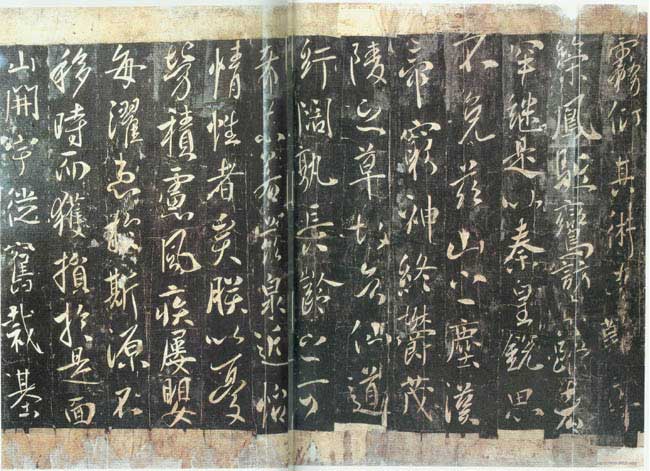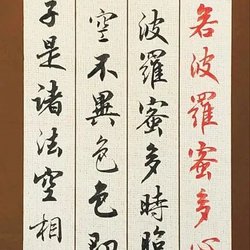
Rubbings of Li Shimin's "Hot Springs Inscription" National Library of Paris
"Hot Spring Inscription" is a running script inscription written by Emperor Taizong of the Tang Dynasty for Lishan Hot Spring. This stele was erected in the 22nd year of Zhenguan (648), one year before Emperor Taizong of the Tang Dynasty died. The original stone has been lost for a long time. Judging from the records, there are no fewer than dozens of original rubbings of "Hot Spring Inscription" in the Tang Dynasty. The last inscription is "Guo Yi, Yugu Prefecture (the lower part is missing) on August 31, the fourth year of Yonghui (653)". One line of the book proves that it is indeed from the early Tang Dynasty. Later, the original rubbing was lost. In the 26th year of Guangxu's reign in the Qing Dynasty (AD 1900), the Taoist priest Wang Yuanlu discovered the Sutra Cave (now numbered as Cave 17) in Cave 16 of Mogao Grottoes in Gansu Province. There were three items in it. The rubbings of the Tang Dynasty are collected in the Dunhuang stone chamber. One of them is the "Hot Spring Inscription" written by Emperor Taizong of the Tang Dynasty, with fifty lines remaining. The other two are Ouyang Xun's "Huadu Temple Stele" and Liu Gongquan's "Diamond Sutra", which are also fragments. It is a pity that these three things are not in China now. The "Hot Spring Inscription", "Diamond Sutra" and the first two pages of "Huadu Temple" were long ago taken to France by Pelliot and are now in the National Library of Paris. "Huadu Temple" The last ten pages of the book were taken to England by Stein before Pelliot and are now in the British Museum in London.
The writing style of "Hot Spring Inscription" is full of excitement and ups and downs, and the characters are full of strange and awkward styles. Yu Fu wrote in a postscript after the post: "Bo Shi (Yu Shinan), Xin Ben (Ouyang Xun), and Deng Shan (Chu Suiliang) each have their own unique skills and achievements, but if we look at this book, we will be better at calligraphy." Go up to the north and serve as the minister's ear." He spoke highly of him. The calligraphy style of this stele is different from the steady and gentle calligraphy of the four families of the early Tang Dynasty, but has Wang Xianzhi's unrestrained style. Some people think that Taizong's calligraphy is between Da Wang and Xiao Wang, but from the works, it seems that he owes more to Wang Xianzhi. However, out of the majesty of the emperor, he was extremely disrespectful to Wang Xianzhi. He once said: "Looking at the shape of his calligraphy, he is as sparse and thin as a dead tree in the middle of winter; looking at his writing, he is as restrained as a hungry official of the Yan family." He ridiculed Xiao Xiao. Wang's motive was later revealed by Mi Fu of the Song Dynasty. Mi Fu made it very clear in "History of Calligraphy": "Taizong studied the right army but could not reach it. He resumed learning Yu's running script and wanted to climb up to the right army, so he cursed Zijing." Emperor Taizong of the Tang Dynasty promoted the big king and suppressed the small king, which had influenced the calligraphy world in the early Tang Dynasty. This was also discussed in Sun Guoting's "Book Book". This mistake, on the one hand, caused the fierce and unrestrained writing style to temporarily disappear due to suppression, and on the other hand, it also caused the peaceful and peaceful writing style of the king to gradually be smeared with the color of the palace and gradually lose its brilliance.




















